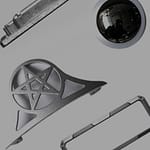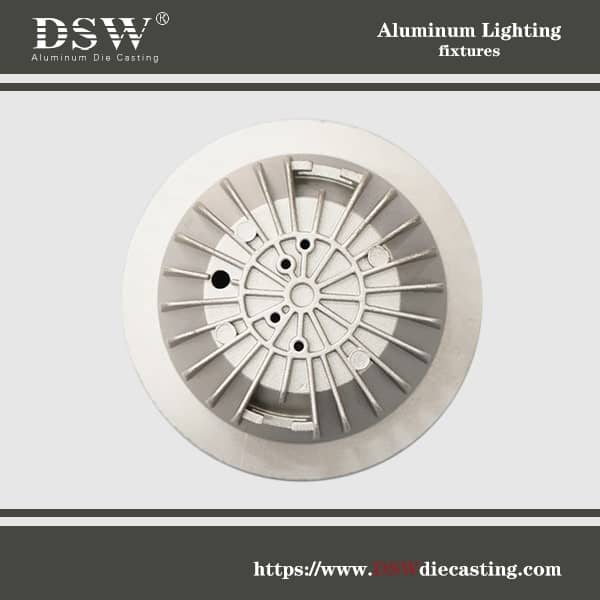What Are the Essential Standards for Die Casting & CNC Machining?
With years of experience in machining and die casting, DSW has accumulated extensive knowledge in quality control and established robust manufacturing standards. This expertise has significantly enhanced the precision and quality of our castings and CNC machining processes. Through continuous improvement and innovation, we ensure that every product meets the highest industry standards for durability and accuracy.

CNC Machining Standards
CNC (Computer Numerical Control) machining standards refer to the guidelines, specifications, and quality requirements that govern the production, performance, and testing of CNC-machined parts and processes.
CNC Machining and Turning Standards
Feature size and location tolerances are +/—0.005” for metals and +/—0.010” for plastics/composites, following ISO 2768 unless otherwise noted.
As-machined surfaces will meet or exceed a 125 Ra finish with visible machine tool marks.
Edges will be broken and deburred by default; critical sharp edges must be specified in prints.
Transparent plastics will have a matte finish or visible swirl marks on machined surfaces.
Orientation and Form Tolerance
Parallelism, Perpendicularity, Cylindricity, Flatness, Circularity, and Straightness vary with part length and are defined as follows:
| Part Length | Orientation/Form Tolerance | Angularity Tolerance |
|---|---|---|
| 0 to 12″ | +/- 0.005″ | +/- ½ degree |
| 12″ to 24″ | +/- 0.010″ | +/- ½ degree |
| 24″ to 36″ | +/- 1/64″ (0.016″) | +/- 1 degree |
| 36″ to 60″ | +/- 1/32″ (0.031″) | +/- 1 degree |
| Over 60″ | +/- 1/16″ (0.063″) | +/- 1 degree |

Die Casting Standards
Die casting standards are guidelines and specifications that govern the materials, processes, and quality control of die-casting operations. These standards ensure that die-cast products meet the required mechanical properties, dimensions, tolerances, and surface finishes.
Die Casting Standards
Typical mold machining tolerances are +/- 0.010″, with an additional +/- 0.001″ per inch for shrink rate adjustments.
As-cast surface finishes typically achieve 64 μin. Post-machining of critical features should be specified before ordering.
Lead time is based on the first article shipment, with subsequent production confirmed after approval.
Part-to-part repeatability is generally within +/- 0.004″.
Die cast parts may exhibit visible parting lines, gate vestiges, and ejector pin marks.
Our Manufacturing Standards
Unless otherwise agreed in your quote, we adhere to the following tolerances, which may vary based on the primary manufacturing method selected. For design optimisation, please refer to our comprehensive Design Guides tailored to each manufacturing process. In the event of any discrepancies between these guides and DSW’s Manufacturing Standards, these standards will prevail.
Workmanship Standards
DSW ensures all orders meet the minimum quality standards relevant to the selected manufacturing process. Should your project require a higher level of quality, please specify these requirements in your engineering drawings, purchase orders, or specifications.
Finished Surface Quality
Cosmetic Standards: Painted surfaces will have uniform coverage, and all finished surfaces will be free from defects such as chips, scratches, or other damage.
Tooling Marks: The as-milled surfaces will be free of burrs, chatter, and other defects and will comply with surface roughness specifications. Critical surfaces will be free from visible mill steps.
Deburring: All exposed edges will be deburred, ensuring no sharp edges, burrs, or metal slivers are present. Remember that we won’t deburr sheet-cut parts unless we choose a specific finish.
Foreign Object Debris (FOD)
Surfaces will be free of contaminants, including cutting fluid, metal chips, and other debris.
Threads
The provided drawings will fully form and cut the threads to the specified size and class, free from defects, damage, or contamination.
Plated Surfaces
Plated surfaces will exhibit uniform coverage, including adjacent areas of assemblies. Surfaces will be free of machining marks, scratches, pits, and visible bare metal. Minor defects may be permissible if they do not compromise the protective finish.
Weld Joints
Weld joints will adhere to customer-provided specifications. Workers will clean welds without explicit requirements to remove slag or contamination and wait to paint them until after inspection.
Countersinks
Countersinks will be round, meet print specifications, and allow proper fit with mating screws, free from burrs and other tooling defects.
Painted Surfaces
Painted surfaces will maintain a consistent, defect-free finish without visible machining marks, scratches, or dust. Paint quality will be assessed at a viewing distance of 18″ at 1X magnification.









